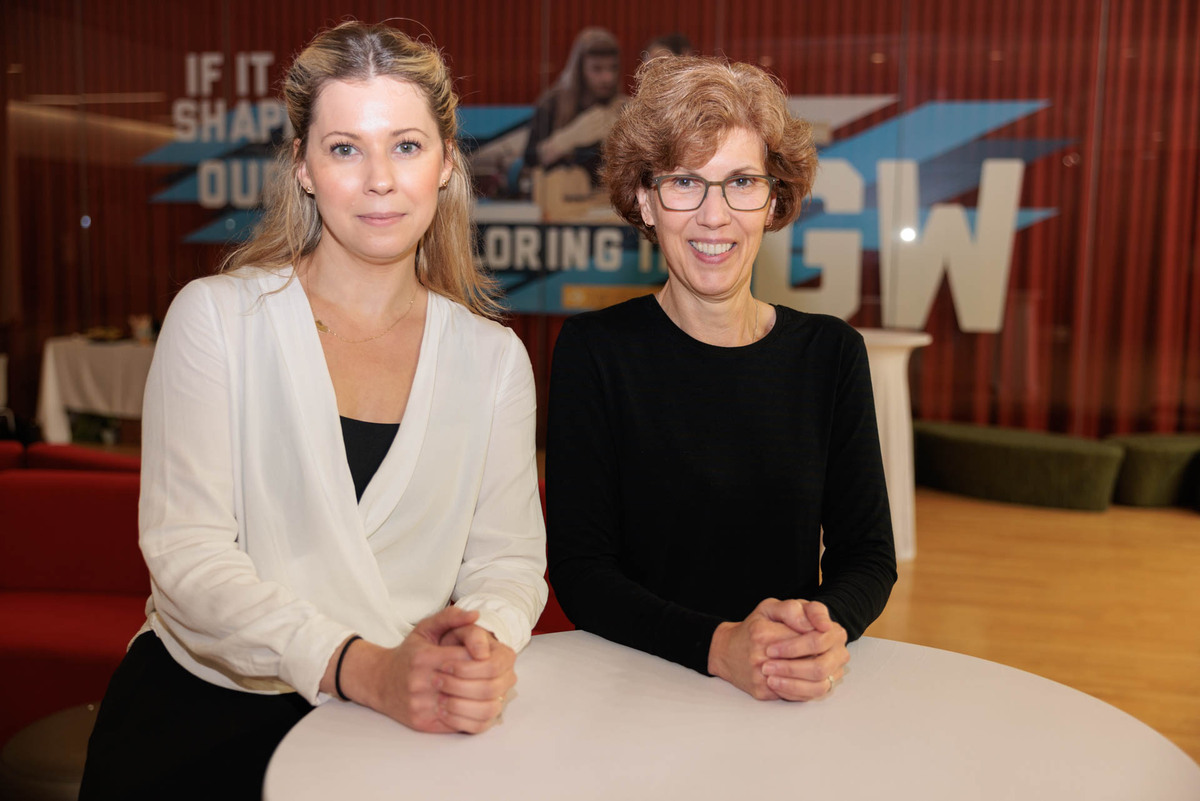Postdoctoral associate Patricia Sikorski conducts research into a complementary system of the immune system, the proteins that fight off infections. She focuses on dysfunctional subtypes of proteins that can turn against the body and result in an autoimmune disease.
“During my doctorate, I started working in a research lab that focuses on myasthenia gravis,” she said. “I loved doing research and found my niche trying to understand the immune system.”
Sikorski is president of the George Washington University Postdoc Association, comprising early-career scholars and scientists on campus involved in research, the independent pursuit of knowledge and mentoring graduates and undergraduates in GW’s various schools and colleges.
Sikorski conducts research alongside her mentor, Linda Kusner, a research professor in the Department of Pharmacology and Physiology, in helping to understand the pathophysiology of myasthenia gravis and developing a therapeutic to treat the disease.
Postdoc Appreciation Day last Monday, organized jointly by the GW Postdoc Association and the GW Office of Postdoctoral Affairs, set the stage for a week of events and activities honoring postdocs at GW. Addressing the group, Suresh Subramaniam, vice provost for graduate and postdoctoral affairs, noted that GW recently joined the Association of American Universities, a select group of 71 research universities in the United States and Canada, and that this prestigious accomplishment was due in no small part to the contributions of postdocs and the groundbreaking research they conduct.
On Postdoc Appreciation Day, a daylong series of events in Science and Engineering Hall, Sikorski said that GW’s postdocs decided they could not “ignore the national and global conversation on the need to reform the postdoc experience.”
Mayank Chugh, the former president of Harvard Medical School’s Postdoc Association and the keynote speaker, was introduced by GWPA Secretary Ruchi Gupta who recognized his involvement in multiple grassroot initiatives supporting “an equitable research culture and compensating, mentoring and outreach capacity.”
Chugh sketched out a postdoctoral history from 1876 when John Hopkins University awarded four fellowships to Ph.D.’s so that they could continue research and highlighted the National Academy of Sciences creation of National Research Fellowships just before World War II in physics, chemistry, medicine and biology for which the Rockefeller Foundation allocated $500,000.
“With the primary objective of making a bigger power around the time of the war,” he said, first the National Cancer Institute and then several other agencies under the umbrella of the National Institutes of Health were brought into being. A 1969 National Academy of Sciences report found that all of this was accomplished without any study or planning of the costs and benefits to the universities and to the nation. There still is a relative lack of data on the subject, Chugh said.
“What is the status quo? And how do we go about expressing change? How do I go about advocating?” he asked, rhetorically.
He identified several areas where there were problems with the postdoc system: “mentorship and support for postdocs; financial consideration and benefits for postdocs; data on postdocs from recruitment to career progression.”
“Where are they coming from?” Chugh said. “That is just one big black box in which there may be bias [built into the process].”
He suggested the answers are not simple. Some surveys have shown, he said, that mentoring might in fact be a barrier to post-doctoral appointees, depending on whether one hopes to work in the clinical, industrial or academic sector.
The issue taking the greatest toll on postdocs, if not necessarily the most important, he said, is whether they have adequate compensation, especially if they have families to support. And he noted what he said are “huge” discrepancies in salaries among postdocs in industry, at foundations and in academia, as well as in different geographic locations.
“Something close to my heart,” Chugh added, is the inequity of such systems where “the inadequate compensation creates selection pressure for people who come from poor backgrounds or are otherwise marginalized, which drives them out of academia.”
In the townhall that followed, GW Vice Provost for Research Pamela Norris stressed that her postdoctoral experience allowed her to make a significant change in the direction of her career in engineering into more “cutting edge” research than had been the focus of her Ph.D.
“After my postdoc with a leading academic, increasing my publication record, teaching at Berkeley, helping in mentoring graduate students and involvement in the development of research proposals,” she said, “I was then prepared to go on to an academic position at [a leading research institution.] So, it really was a career changing step for me.”
She noted that GW no longer makes a distinction between postdoctoral appointments in terms of the stipend and benefits they receive and thanked them for all they do for the scholarly enterprise at GW.
Sikorski sees her experience at GW as a path to running her own laboratory, a goal that her mentor Kusner supports.
“Patricia does have her own grant to do the work she is doing,” Kusner said. "[Postdocs] need a project, their own direction. They need something they can put their stamp on and say, ‘This is mine and I’m taking it with me to my next job’ or wherever they go.”
After the keynote address and remarks, other sessions included roundtable discussions about professional and career development, as well as topics such as how to improve working relationships and the potential for collaborating on research projects. There was also a town hall event to discuss issues affecting postdocs. This was followed by lightning talks during which postdocs described the research projects they were working on.
Three postdoctoral fellows won in the lightning talks: Tarun Agarwal (School of Engineering and Applied Science) on developing multi-responsive 4-D constructs for biomedical applications; Hovhannes Arestakesyan (School of Medicine and Health Sciences) on remodeling neuronal synapses in the hypothalamus during obesity; and Donya Shodja (Columbian College of Arts and Sciences) on pioneering genetic tools for illuminating Lepidopteran mysteries.



